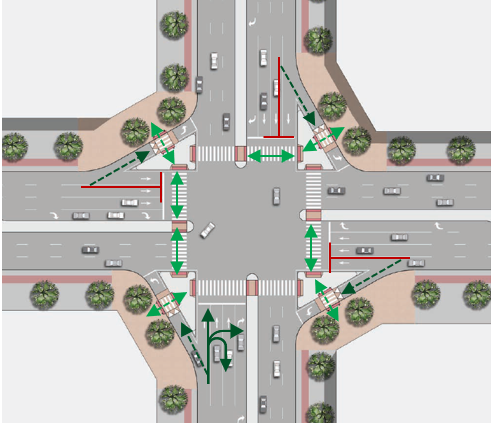I have recently returned to New Zealand after 14 years away in Abu Dhabi, the capital of the UAE, where I worked both in consultancy and for the government’s transport department.
We’ve enjoyed a warm welcome home in Christchurch where we managed to settle in quickly. Securing employment with Abley in advance made the process easier and I’m grateful for that, its a great place to work.
New Zealand’s existing narrow road corridors provide a challenge to safely accommodate all travel modes – pedestrians, cyclists, micromobility, buses, cars and trucks, and to do so in a vision zero manner.
Thoughts from my experience in Abu Dhabi
We do not have to be restricted to current corridor widths for new urban roads and could choose to set design standards that are Vision Zero compliant and safely provide for all travel modes.
Abu Dhabi’s roading design standards are higher than New Zealand’s, closer to a vision zero approach and provide some inspiration for what could be achievable if adapted to suit a New Zealand context. This is reflected in the road fatality rate which is approximately half that of New Zealand with the official fatality rate in the UAE at 3.09 per 100,000 population in 2021 whereas New Zealand’s was 6.3 in 2020.
Some key design differences in Abu Dhabi stood out from a vision zero perspective
Wider main road corridors with:
- Underground infrastructure outside the carriageway meaning safer road surfaces with no trenching and very few potholes.
- Space for off-road cycle, micro-mobility and pedestrian paths
- No parking, improving driver visibility and reducing complexity and conflicts
- The use of medians on all roads from collectors upwards in the road hierarchy reducing priority junctions to safer left-in, left-out movements in the NZ context.
Local streets with:
- 40kmh speed limits and traffic calming devices on them to achieve this operational speed.
- Network layouts so that junctions were safer, T-intersections rather than crossroads, and with speed humps on at least two of the approaches to the T-intersections.
Traffic signals with:
- Approach based signal phasing meaning that there was no traffic making filtered turns through opposing traffic. Pedestrian, cyclists and micro-mobility users also had fully protected movements across the signalised intersection and raised pedestrian crossings on the slip lanes.

First signal phase of four
Abley’s road safety team are experts in this area and can provide some of the world’s best specialist advice. I have joined the strategy and planning team. We support governments and Councils to achieve better transport outcomes for communities now and in the future.

Arterial streetscape in Abu Dhabi
.png?width=556&height=152&name=Abley_MasterLogo-Website%20(1).png)


